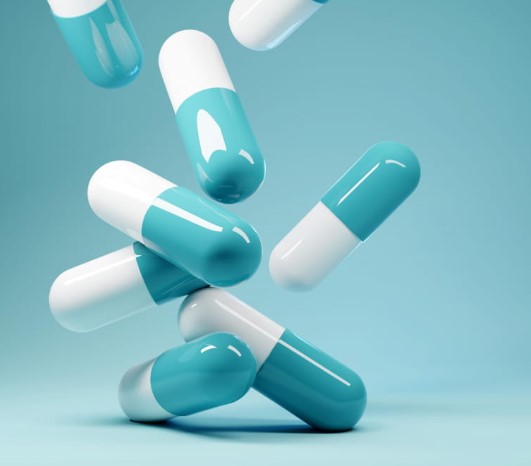Antibiotics in milk: the problem and ways to solve it

Photo is illustrative in nature. From open sources.
Milk is a staple food that is widely used by people around the world. However, despite its benefits and popularity, there are concerns about the presence of antibiotics in milk. This is because some farmers may useantibiotics for the treatment of animals or the prevention of diseases, which may result in the release of these substances intomilk .
The presence of antibiotics in milk poses a serious threat to human health. Consumption of such milk can cause allergic reactions, disturbances in intestinal microflora and the development of antibiotic resistance. Therefore, monitoring the content of antibiotics in milk is extremely important.
There are several ways to combat the problem of antibiotics in milk. First of all, it is necessary to strictly control the use of antibiotics in animals and ensure compliance with the deadlines for removing drugs from the animals’ bodies before collecting milk. Regular checks for antibiotic content in milk are also carried out at factories and in stores.
To combat the problem of antibiotics in milk, special analytical and testing methods are also being developed that can quickly and accurately determine the presence of antibiotics in milk samples. This helps to promptly identify problem batches and prevent such milk from reaching store shelves.
In general, the problem of antibiotics in milk requires serious attention and control on the part of producers, regulatory authorities and consumers. Only through joint efforts can we ensure the safety and quality of dairy products, eliminating the risk of antibiotics getting into the milk we consume.
Original article: https://pionerprodukt.by/antibiotiki-v-moloke/antibiotiki-v-moloke.html
Read together with it:
- My husband betrayed me and now he regrets itI'm 29 years old, I have a beautiful little onedaughter . I was in a civil marriage, before the registry office my exmy husband never arrived. We dated for 5 years, I fell in love with him and still love him, he is 10 years older than me. I got pregnant and we decided to get married.During pregnancy...
- My husband lost interest in me after giving birth and constantly criticizes meI have a cry from my soul and I don’t know how to proceed and I have no one to tell, I can’t tell my parents, I don’t want to upset them. You can’t tell everything to a friend, no matter how close she is.I cried all my eyes out from resentment and loneliness, but there was just darkness in my soul. ...
- Confession of a mother with a child under three years oldIn the morning I get up with an alarm clock at 7:20 to wake me uphusband to work. I don’t wish him good morning, I don’t make tea or breakfast. I angrily lift him out of bed so that his own alarm clock, to which he has been sleeping well for many years, does not irritate me and wake up my son. My so...
- My family life was like a vicious circleIt was difficult for me to understand those married couples who separated due to betrayal, some kind of grievances, and simply a basic misunderstanding of each other. We parted forever. “That means they didn’t love each other,” I thought. And with all my might, learning from other people’s mistakes,...
- Tests for antibiotics in milk: why they are needed and how they are carried outAntibiotics are powerful medications that are used to fight infections and bacterial diseases. However, their improper use can lead to the development of bacterial resistance to antibiotics, which creates seriousproblems for healthcare. One way to monitor antibiotic use is to test livestock products...
- Tests for antibiotics in milk: why they are needed and how they workMilk is a staple human food and its quality plays an important role in ensuring the health of consumers. However, sometimes in the milk production process they may be usedantibiotics , which can end up in the final product and pose a health hazard. To monitor the content of antibiotics in milk, spec...
- I want to forget about what my beloved husband did, but I can’tI don’t know what to do anymore, and what to do? The desire is such that you want to hit the wall and lose your memory.I love very muchI have always loved my husband . We have a wonderfuldaughter , first grader. My husband really wanted a second child, I became pregnant with my son. And then he brok...
- Antibiotic tests pioneerTests forAntibiotics are an important tool in medicine for determining the sensitivity of bacteria to various antibiotics. A Pioneer in this field is a technique developed in the 1950s that can quickly and efficiently determine the effectiveness of antibiotics against specific microorganisms. In thi...
- Don't listen to talk about the happiness of motherhoodI am 23 years old. I was not happy when I found out I was pregnant. And I have mineMy husband also had mixed feelings about the unexpected news, because this was not part of our plans. But then I was happy.When I was 7-8 weeks pregnant, I had an accident. I was admitted to the hospital for conservat...
- Mother-in-law's hatred led to divorceMy first mother-in-law placed chicken feathers under my doormat. She did it to my death. She hated me because shemy son married me without her consent.Mymy husband studied to become a military man in my city, where we met. He has an older onesister , who moved to Moscow and works there as a waitress...
